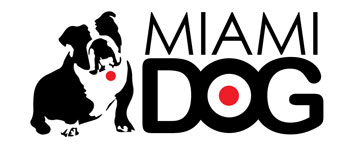
There are many different opinions when it comes to how to train dogs, and these differences have caused a definite split in the dog training world. There is a saying that if you put three dog trainers in a room together, the only thing they will agree on is that the other two are wrong. There is some truth to this, but as the debate rages on, science is revolutionizing our understanding of domestic dog behavior and tipping the scales toward a more positive, humane approach that I call “positive training.”
When I became a dog trainer over 20 years ago, the dog-training industry was moving toward a more humane model. But just as positive training was gaining in popularity, punitive techniques resurfaced again on a popular American dog-training show, setting positive training back years. The American Veterinary Association, the American Veterinary Society of Animal Behaviorists and the American Humane Association were among the many institutions to sound the alarm, but the damage had already been done. At the same time, my show It’s Me or the Dog transitioned from the United Kingdom to the United States, giving American viewers an antidote to punitive training by demonstrating that dogs could learn to behave without the use of force, regardless of their age, sex, breed or issue. The two dog training camps now had their very public flag bearers and the debate continued to rage.
What is pack theory?
Traditional training bases a lot of methods on what is called “pack theory.” Traditional trainers teach people to be “pack leaders” using equipment and methods designed to exert dominance and rank by suppressing the dog’s believed desire to dominate people and be pack leaders themselves. This sows the seeds of distrust and leads people to use techniques that supposedly demonstrate their role as pack leaders. One technique is called the Alpha roll — if a dog misbehaves, he is forcefully held down on his back or side until he submits. This forceful submission intimidates and sometimes hurts the dog into obeying.
What an Alpha really does
The terms “Alpha” and “pack leader” have become curse words in the positive training world because of the damage they cause. The word Alpha is usually used to describe a dog or person who forcefully exerts control over others, but in reality an Alpha does not need to use force at all. True leadership is shown by teaching and influencing behavior in others without the use of force, something most dog lovers would rather embrace. So why have some people got it so wrong?
Pack theory and misuse of the word Alpha is partly due to flawed research done on captive wolves in the 1970s by David Mech, a senior scientist with the US Geological survey. Little did he know that his research was about to set off a firestorm of misunderstanding in the dog-training world.
To conduct this research project, wolves from different packs were forced to live together so that researchers could get a better idea of how wolf packs worked. The resulting violence to establish dominance within the captive pack was vigorously studied and the results were also applied to dog behavior. But if researchers wanted to see how a true wolf pack functioned, they were headed in the wrong direction because their experiment was based on some crucially flawed assumptions.
Firstly, dogs are not wolves. While dogs retain some characteristics of the wolf, 15,000 years of domestication has changed them in many different ways, both physically and behaviorally. Secondly, what researchers were viewing when they studied captive wolves was the behavior of a dysfunctional pack, and it was this dysfunction that caused the violence. David Mech has since explained this mistake by stating that, “When one puts a random group of any species together artificially, these animals will naturally compete with each other.”
He goes on to clarify that a natural pack is made up of a mother and father and their offspring. This pack survives rather like a human family where the parents take the leadership role and the children follow. In a natural pack, violence is not normal, and harmony is created because submissive behaviors are freely given by the younger wolves, rather than being forced onto them by their parents. This deference avoids injury which would compromise the pack’s ability to hunt prey successfully. So when humans attempt to assert their Alpha status over their dogs using techniques like the Alpha roll, they are not being Alphas at all but replicating the role of a pack bully. And as for being a pack leader? Well, dogs are pretty smart and know very well that humans are not dogs. How can people be pack leaders when they look and behave so differently?
A natural pack of wolves is made up of a mother and father and their offspring.
Positive versus punitive
There is still a long road ahead when it comes to putting punitive training methods and misuse of words to bed once and for all, but until then I will continue to carry the flag for the positive training camp. Positive training seeks to build relationships with dogs based on mutual trust, motivational rewards and understanding. Instead of punishing negative behavior, positive trainers work to find what caused the behavior and adopt humane ways to modify and change it. The results are worth it. Dogs that are positively trained are more confident, tolerant, self-controlled and predictable in different situations.
As David Mech states, “This issue isn’t one of semantics and political correctness. It is one of biological correctness that accurately captures the biological and social role of the animals rather than perpetuate a faulty view.”
